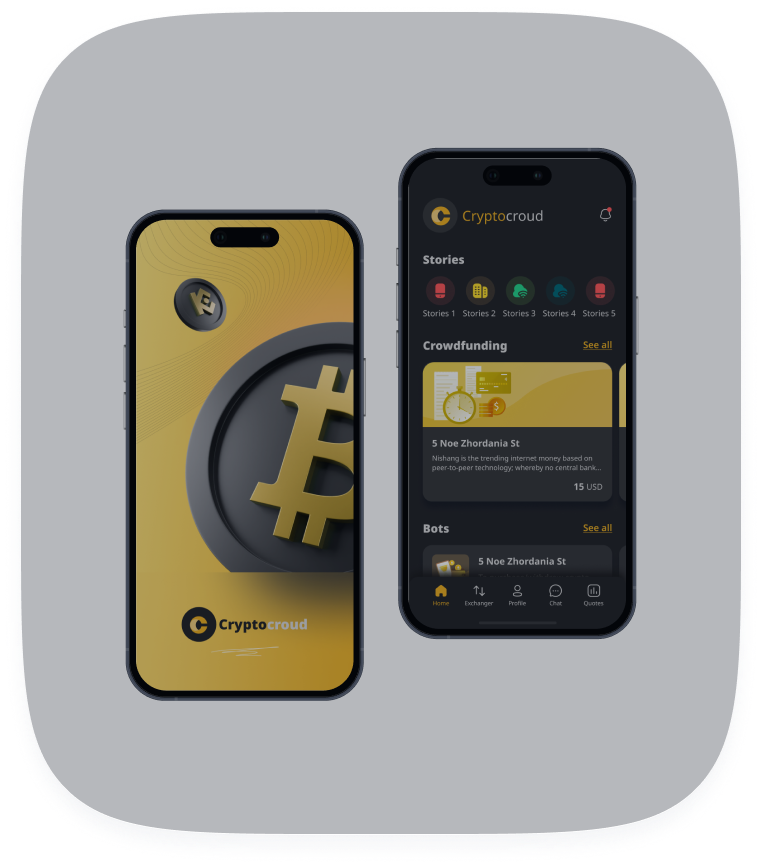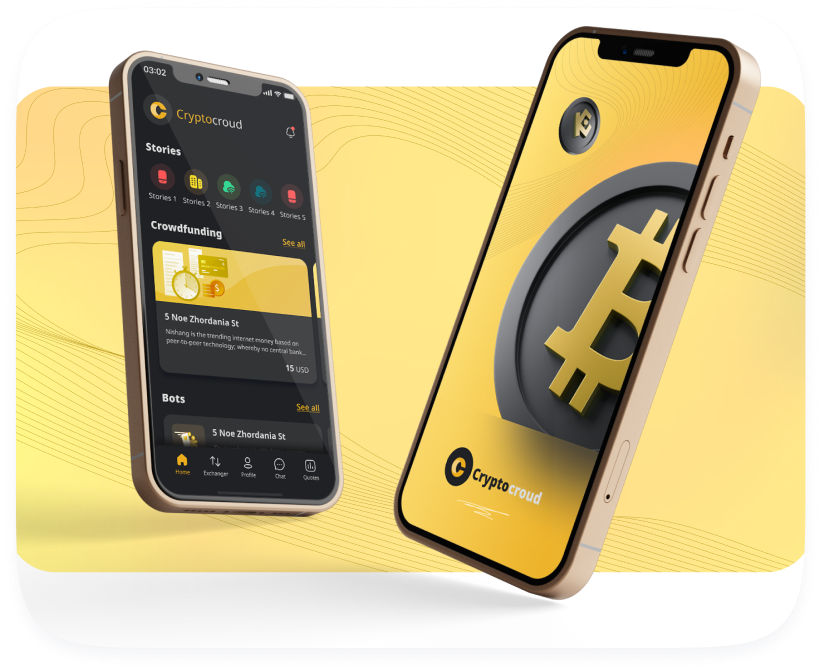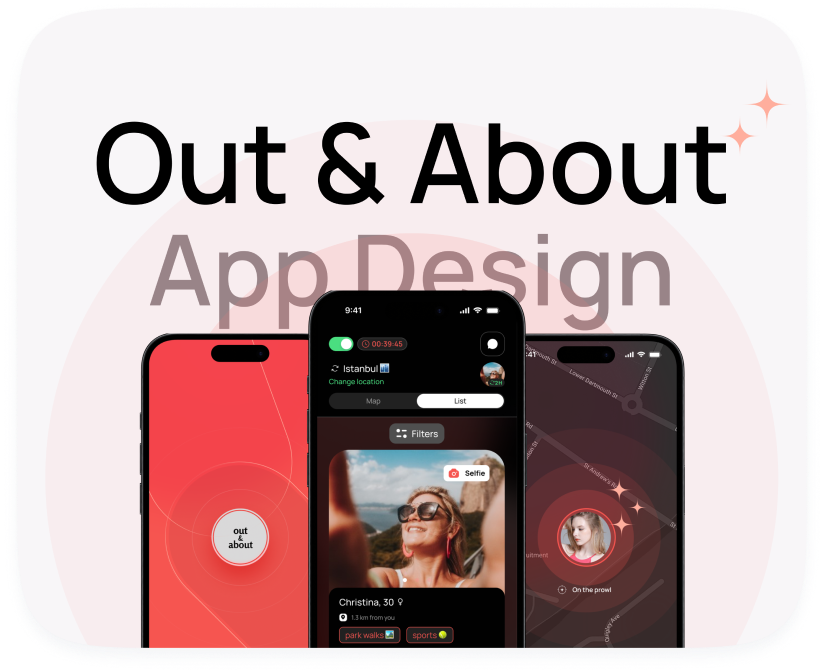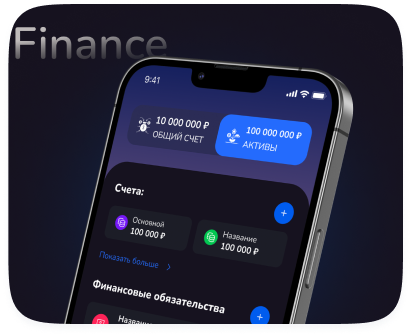
We build mobile apps





We work directly with every client
We deliver solutions with guaranteed results.

We build mobile apps






















It’s similar to buying a car at a dealership: you can go with the basic model, or choose a fully loaded version — it all depends on your needs and goals.

How to create YOUR OWN ChatGPT?

How to PROPERLY create a mobile app in 2024 | Step by step

You pay > We work > You receive the results. If you’re satisfied, you pay the next installment.
We need to have a call and discuss your specific requirements.
One thing we can say for sure: projects under 500,000 rubles are not feasible — we can’t deliver the required quality for less.
We launch, gather user feedback, and add new features that help you earn more from the app.
During development, I always design the architecture to make future updates and improvements easy and convenient.
Some apps perform better with influencer marketing, others through ad networks, and sometimes it’s even effective to buy a contact list and set up retargeting 😊
It all depends on your project’s specifics and is discussed personally.
How we can help:
- Set up ASO (App Store Optimization) and create an attractive app store page to drive free, organic installs.
- Help you develop the right promotion strategy tailored to your app.
- Share contacts of advertising experts I personally work with.
Спросить ChatGPT
The only ongoing cost is paying for the server (hosting).
You pay a subscription fee for the server. The more users your app has, the more server resources it consumes, and the higher the hosting costs.
At the early stages, when you have few users, the server will be FREE.
After that, the cost will gradually increase, but it remains affordable.
For example, an app with 100,000 users spent about $150 per month on hosting.
Food Delivery App Development: For Restaurants & Aggregators
Description: Learn about food delivery app development for restaurants and aggregators. Explore features, costs, and development strategies for success in the food delivery industry.
Introduction
The food delivery industry is booming, driven by convenience and technological advancements. Consumers increasingly rely on mobile apps to order meals from their favorite restaurants, creating a significant opportunity for both restaurants and aggregator platforms. This article delves into the intricacies of food delivery app development, exploring the key considerations for restaurants seeking to establish their own online presence and for aggregators aiming to build robust and scalable platforms.
Understanding the Landscape: Restaurants vs. Aggregators
Restaurants
For restaurants, a dedicated food delivery app offers a direct channel to connect with customers, build brand loyalty, and control the entire ordering and delivery experience. By cutting out third-party commissions, restaurants can improve profit margins and gain valuable customer data.
Aggregators
Aggregator platforms, such as Uber Eats, DoorDash, and Grubhub, provide a marketplace connecting numerous restaurants with a large customer base. Developing a successful aggregator app requires a comprehensive approach, focusing on user experience, restaurant onboarding, efficient delivery management, and robust technology infrastructure. The key lies in building a food delivery platform that is reliable, scalable, and caters to both customers and restaurants.
Essential Features for a Food Delivery App
Customer App Features
- User Registration and Profile Management: Secure and easy signup/login with options like social media integration.
- Restaurant Browsing and Search: Efficiently browse restaurants by cuisine, location, rating, or promotions.
- Menu Viewing and Customization: Detailed menus with clear descriptions, images, and customization options.
- Order Placement and Tracking: Simple order placement process with secure payment gateway integration. Real-time order tracking is crucial.
- Payment Gateway Integration: Secure and seamless payment options (credit cards, digital wallets, etc.).
- Push Notifications: Order status updates, promotions, and personalized recommendations.
- Reviews and Ratings: Allow users to rate and review restaurants and dishes.
- Customer Support: In-app chat or contact information for customer service.
- Order History: Easy access to past orders.
Restaurant App Features
- Order Management: Real-time order notifications and efficient order processing.
- Menu Management: Easy menu updates, price adjustments, and item availability management.
- Delivery Management (if applicable): Option to manage their own delivery fleet or integrate with a delivery service.
- Reporting and Analytics: Track sales, popular dishes, and customer demographics.
- Payment Management: Track payouts and manage financial information.
Delivery Driver App Features
- Order Acceptance and Management: Receive and accept delivery requests efficiently.
- Navigation and Route Optimization: GPS integration for optimal route planning.
- Real-time Tracking: Share location with customers and the restaurant.
- Earnings Tracking: Track earnings and payment history.
- Communication: Communicate with customers and restaurants.
Admin Panel Features (for Aggregators)
- Restaurant Management: Onboarding, approval, and management of restaurants.
- User Management: Manage customer accounts and profiles.
- Delivery Management: Manage delivery zones, drivers, and logistics.
- Payment Management: Process payments to restaurants and drivers.
- Reporting and Analytics: Comprehensive reporting on platform performance.
- Content Management: Manage app content and promotions.
Technology Stack for Food Delivery App Development
Choosing the right technology stack is crucial for building a scalable and reliable food delivery app. Here are some popular technologies:
- Mobile Development:
- Native (iOS: Swift/Objective-C, Android: Java/Kotlin) - Offers best performance and user experience.
- Cross-Platform (React Native, Flutter) - Allows for code reuse across platforms, potentially reducing development time and cost.
- Backend Development:
- Node.js - Excellent for real-time applications and handling a large number of concurrent requests.
- Python (Django/Flask) - Versatile and scalable for complex backend logic.
- Java (Spring Boot) - Robust and enterprise-grade framework.
- Database:
- MySQL/PostgreSQL - Relational databases for structured data.
- MongoDB - NoSQL database for flexible data storage.
- Cloud Platform:
- AWS (Amazon Web Services) - Comprehensive suite of cloud services.
- Google Cloud Platform (GCP) - Scalable and innovative cloud solutions.
- Microsoft Azure - Enterprise-grade cloud platform.
- Payment Gateway:
- Stripe
- PayPal
- Braintree
- Mapping and Location Services:
- Google Maps API
- Mapbox
- Push Notifications:
- Firebase Cloud Messaging (FCM)
- Apple Push Notification Service (APNs)
The Cost of Food Delivery App Development
The food delivery app development cost can vary significantly depending on the complexity of the app, the features included, the technology stack used, and the development team's location and expertise. Here's a breakdown of the factors influencing the cost:
- App Complexity: Simple apps with basic features will cost less than complex apps with advanced functionalities.
- Features: Each feature adds to the development time and cost.
- Platform (iOS, Android, or both): Developing for both platforms will increase the cost.
- Design: Custom designs require more time and effort than using pre-built templates.
- Development Team Location: Development rates vary significantly by region (e.g., North America vs. India).
- Team Structure: The size and composition of the development team (project manager, developers, designers, testers) will impact the cost.
As a rough estimate, a basic food delivery app (for a single restaurant) might cost between $10,000 and $30,000. A more complex aggregator app could range from $50,000 to $150,000 or even higher.
Development Process
A structured development process is essential for ensuring the successful creation of a food delivery app. Here's a typical development process:
- Planning and Discovery: Define the app's scope, target audience, features, and monetization strategy.
- Design: Create wireframes, mockups, and prototypes to visualize the app's user interface and user experience.
- Development: Write the code for the app's front-end (customer-facing interface) and back-end (server-side logic).
- Testing: Thoroughly test the app to identify and fix bugs and ensure it meets quality standards.
- Deployment: Release the app to the App Store and Google Play Store.
- Maintenance and Support: Provide ongoing maintenance, updates, and support to ensure the app remains functional and secure.
Marketing Your Food Delivery App
Developing a great app is only half the battle. You need a solid marketing strategy to attract users and drive adoption. Here are some effective marketing strategies:
- App Store Optimization (ASO): Optimize your app's listing in the App Store and Google Play Store to improve visibility.
- Social Media Marketing: Promote your app on social media platforms to reach your target audience.
- Paid Advertising: Run targeted ads on platforms like Google Ads and Facebook Ads.
- Content Marketing: Create informative and engaging content related to food delivery and the restaurant industry.
- Email Marketing: Build an email list and send out newsletters and promotions to your subscribers.
- Partnerships: Collaborate with restaurants and other businesses to promote your app.
- Public Relations: Reach out to journalists and bloggers to get your app featured in the media.
Table: Comparison of Restaurant vs. Aggregator Apps
| Feature | Restaurant App | Aggregator App |
|---|---|---|
| Target Audience | Existing customers and local residents | Wide range of customers seeking diverse food options |
| Brand Building | Strong brand building opportunity | Limited brand visibility for individual restaurants |
| Commission Fees | No commission fees (direct sales) | Commission fees paid to the aggregator |
| Control | Full control over the ordering and delivery process | Less control; reliant on the aggregator's platform |
| Marketing | Requires proactive marketing efforts | Benefit from the aggregator's marketing efforts |
| Development Cost | Lower development cost compared to aggregator apps | Higher development cost due to complexity and features |
| Customer Data | Direct access to customer data | Limited access to customer data |
Conclusion
Food delivery app development presents significant opportunities for both restaurants and aggregator platforms. By understanding the key features, technology stack, development process, and marketing strategies, businesses can build successful apps that meet the evolving needs of consumers in the dynamic food delivery industry. Whether you're a restaurant looking to establish a direct online presence or an aggregator aiming to create a robust and scalable platform, careful planning and execution are crucial for success. Investing in a well-designed and user-friendly food delivery app can significantly enhance customer experience, boost revenue, and strengthen your position in the competitive market.






